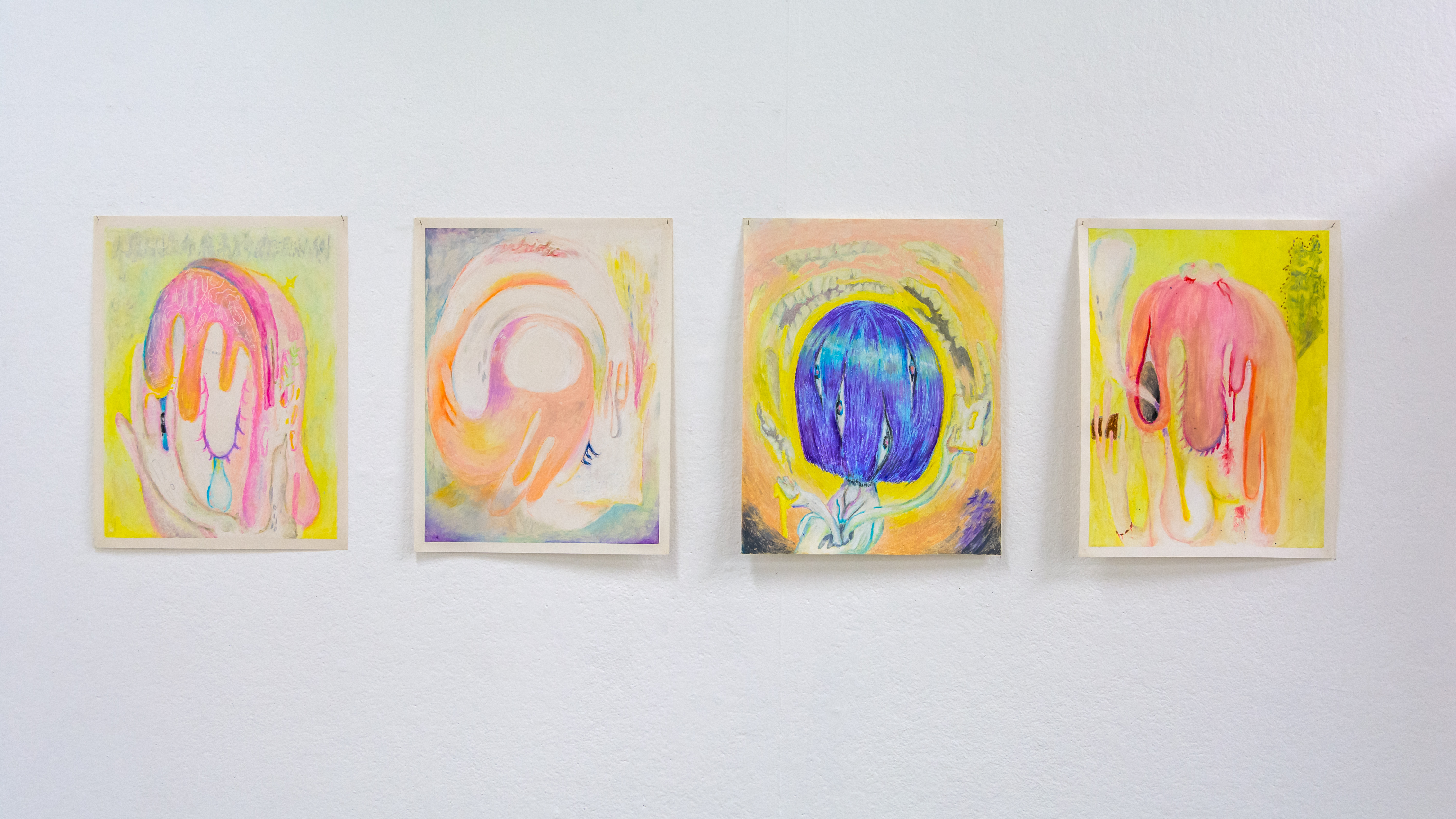
Helena Tsang
The Unspoken

"兄弟爬山”
There is a saying in the Hong Kong pro-democracy protest movement, meaning we do whatever we do best to assist each other to overcome difficulties and reach a goal. Under the National Security Law in Hong Kong, one can be arrested for chanting slogans that incite to overthrow the government. Therefore it comes to question, how can one express complicated, politically activated thoughts and communicate these with others who are working towards the same objective? Rethinking the notion of protest, I find that art can be the fluid medium that visualizes people’s thoughts and allows the protestor’s unspoken/ forbidden words to be seen. Protest art can be loud under silence. This series of drawings are a representation of how Hong Kong protestors situate themselves in the current protest climate. In my drawings, characters act as a stand-in and protect the protestor’s identity. The artworks are also a record of my emotional state witnessing this movement from afar.
“Empty your mind, be formless, shapeless___ Like water… be water, my friend.”
This is a quote from Bruce Lee that is commonly used in the Hong Kong protests as a mantra for resilience and adaptability to new conditions. Rethinking the notion of protest; art could be seen as a fluid medium to visualize people’s thoughts to allow them to be seen.
My art practice stems around the idea of a silenced voice and a silent protest towards the political situation in Hong Kong (the National Security Law (NSL)). Under the law, a person could get arrested by voicing opinions or using slogans that incite to overthrow the state. From 30th June till late September, at least 28 people were arrested under NSL including politicians and tycoons.[1] Recently under the ruling of the National Security Law, 12 youths were detained in China while fleeing to Taiwan; 80 days and ongoing.
Silence is often perceived as an indication that everything is alright. Yet being silent under an oppressive political situation is a way of survival, to avoid conflict or to protect a person’s identity. Sometimes what one would consider the safest place could also be the most dangerous space. However, when a place is pressured under tyranny and is forced to deal with daily absurdity, does one remain silent and pretend everything is normal?
The series "Your words will be protected", are portrait drawings that represent the Hong Kong protestors. These works are a reflection of how the Hong Konger’s situate themselves throughout the protesting period. In response, my characters are like talisman, protecting the interviewee’s identity in order to share the weight of absurdity with the interviewee. For the " Thoughts Under silence" series, I document my state of being, witnessing the protest movement, from Aotearoa. In a way, the drawings are thoughts that could not easily be transformed into words and said out loud. I see these characters as my communicators as they are capable of transforming the unspoken into a legible medium.
In George Steiner’s book “Silence and Language” the author explains the empowerment of presenting political issues through the written “Silence is an alternative…nothing speaks louder than the unwritten.”[2]To me, this expresses the depths of how language and complicated ideas can be expressed through drawing. It is recorded, and the memory will remain.
‘‘By voicing the silent and the silenced, it seeks to propel them {those who have been silenced} into the space of representation that is also the space of remembrance’ [3]
May the silenced protest be heard and remembered.
香港人, 今宵多珍重。
______________________________
[1] Helen Davidson, Andy Ball, “The arrested: Hongkongers caught up in Beijing’s national security law,” The guardian, September 29, 2020, https://www.theguardian.com/world/ng-interactive/2020/sep/29/the-hong-kong-arrested.
[2] George Steiner, Language and Silence (London: Faber and Faber, 80, 2010) https://books.google.co.nz/books?id=AiTAnrY2rKkC&printsec=frontcover&source=gbs_ge_summary_r&cad=0#v=onepage&q&f=false
[3] Candela Delgado, Marin, “Dignity and voice in silence: contemporary female visual artists’ quiet empathy, (July 2017): 67-79, https://www.tandfonline.com/doi/full/10.1080/13527258.2017.1347889?scroll=top&needAccess=true.



